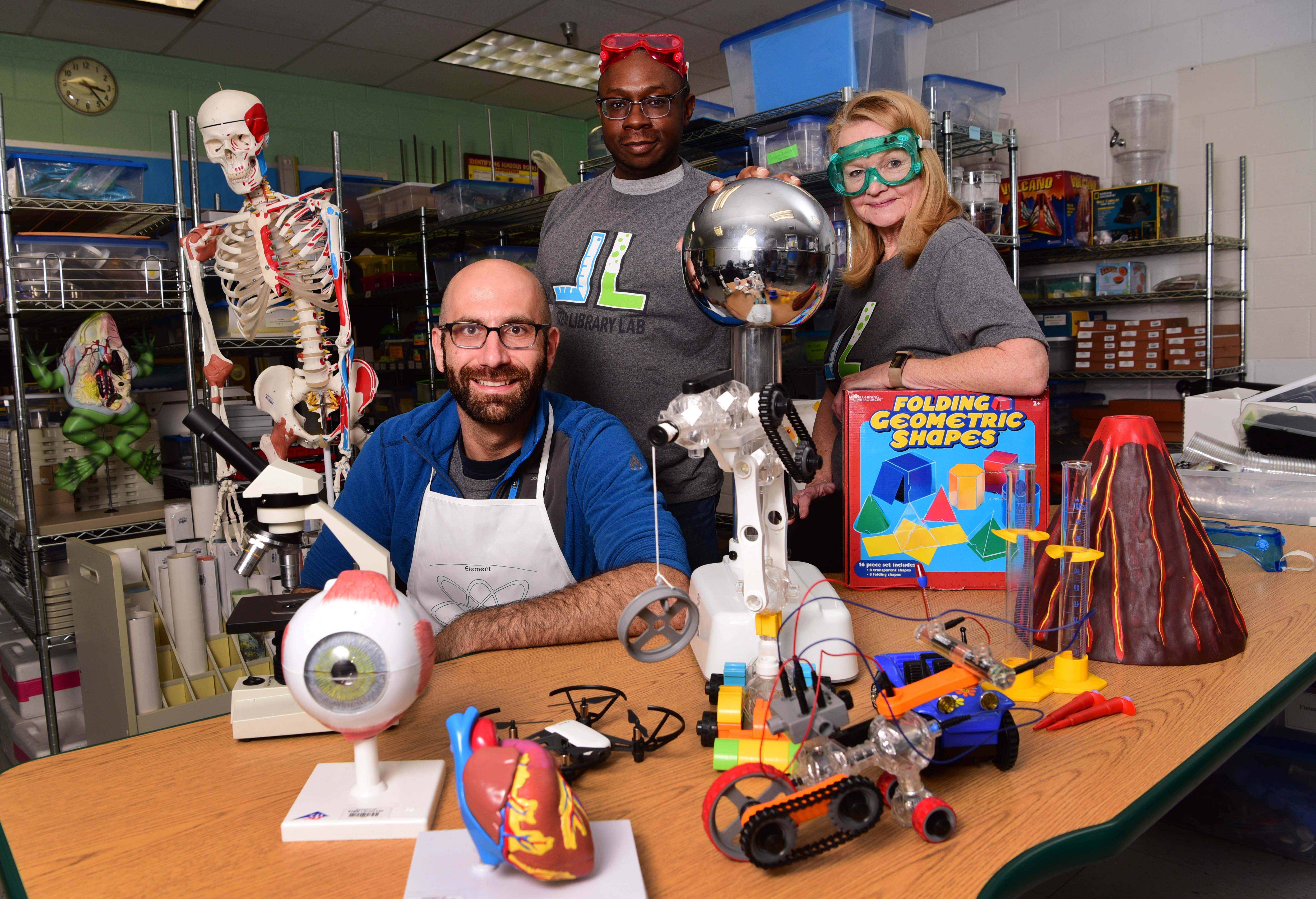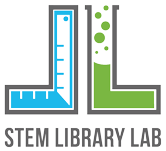Student interest in STEM fields is there, said Louisiana State Superintendent John White who, in an Oct. 11, 2018 press release noted that “More than half of Louisiana students are interested in pursuing careers in STEM fields, but only 10 percent meet the benchmark demonstrating their readiness for math and science coursework in college.” But what about the resources to encourage learning? How do we cover that gap?
Frustrated and determined to do something to create more access to equipment needed for labs and content to encourage these students, Wackerman left the classroom in 2016 with a vision.
The idea for the STEM Library Lab was born.
Launched in October 2018 on the campus of Bricolage Academy (a charter school on Esplanade Avenue that serves pre-K through sixth grade), the 750-square-foot STEM Library Lab has almost every item an educator might need, and then some.
“The library houses [around] $100,000 in science, technology, engineering and math classroom equipment, and runs the gamut of your imagination,” Wackerman said. “From a suitcase full of primate skulls, to beakers, stopwatches and scales, to models and rock collections, to flashlights and hula hoops. At the same time, if a school needs something we don’t have, we will work with them to identify alternatives or search within our network to find it.”
Modeled after a standard lending library, teachers can check out various items as needed, with the list of members growing each month. The library currently serves 12 local schools, impacting more than 3,500 students.
“Membership is open to any local school or organization,” Wackerman said. “Once a school signs up, borrowers can place reservations online, or visit the library and browse the shelves in person, which is certainly more fun. The registration and orientation process is simple, and currently we have more inventory than we have members, so we’re excited to recruit new borrowers for this school year or next.”
Wackerman said that funding for the STEM Library Lab so far has come from local family and corporate foundations that have provided both startupmoney and covered operating expenses while the lab builds out its sustainable earned-revenue model through memberships.
“Schools buy an annual membership which provides all teachers unlimited access to our complete equipment inventory, as well as our workshops and support services which ensure teachers have all the tools they need to develop great hands-on lessons,” said Wackerman. “We also have reserve funding for just-in-time purchases if teachers need items we don’t currently stock, ensuring that schools will have access to anything they may need throughout the year.”
The average cost of an annual membership is between $2,000-$3,000, though partial scholarships may be available based on school need. The amount of a membership is based on the grades served at a school and its total number of students. A chart detailing the pricing is located on the organization’s website.
In addition to finding equipment, Wackerman said members also receive assistance in how to use it.
“It is truly a community-driven space,” he said. “As of right now, students don’t actually visit the library, but the photos and verbal testimonial we’ve seen demonstrates that from pre-K through high school, access to quality active learning is allowing students to have meaningful new experiences with STEM.”
While the library’s shelves are packed with supplies, anticipating an educator’s exact needs is impossible. Wackerman said the library has worked out a plan to respond to those needs on demand.
“We reserved a portion of our funds for on-demand requests,” he said. “When a teacher walked in and needed box fans, or pulse oximeters, though they weren’t on the shelves yet, we ordered them and three days later they were in classrooms. Now any other teacher is welcome to benefit from them as well. Of course, there are some larger specialty items like a Flir Camera for environmental science, or engineering tools like Vex Robotics kits, which are still on our wish list.”
Besides Wackerman, who serves as founder and director, the library is staffed by two full-time employees, librarian Allie Cooper and outreach coordinator Michaela Slosar. Both rent out supplies and assist with the lab’s regular events like, “Communities of Practice,” an opportunity for teachers to connect and share with other professionals and teachers, “Office Hours with Experts” sessions, which provide critical inside information on a variety of STEM professional topics, “Educator Open House events,” and “Teacher Supply Swaps.”
The STEM Library Lab has met with a generous and appreciative response from teachers across the city.
“Seeing has truly been believing,” Wackerman said. “STEM Library Lab was built as an answer to a problem voiced by our local New Orleans teachers: not having the resources they needed to implement hands-on science learning. If a K-8 school wanted to buy everything recommended for their school by Fischer Scientific, they’d spend over $110,000 — $65,000 for high school.”
Wackerman’s goal with the STEM Library Lab is partly to inspire New Orleans students to fill the region’s career opportunities from within.
“STEM literacy and STEM-specific careers are booming in New Orleans and across Louisiana, but we’re currently importing talent from out-of-state for these engaging, high-wage jobs,” he said. “But more importantly, the types of thinking and problem solving involved with high-quality STEM instruction is not just developmentally critical, it’s also simply more fun for everyone involved.”
Did You Know?
STEM Careers Remain Among Most Lucrative Job Paths
Employment in science, technology, engineering and math (STEM) occupations has grown 79 percent since 1990, from 9.7 million to 17.3 million, outpacing overall U.S. job growth.
Among those with some college education, the typical full-time, year-round STEM worker earns $54,745 while a similarly educated non-STEM worker earns $40,505 — 26 percent less.
The median earnings of non-STEM workers with a professional or doctoral degree trail their STEM counterparts by 24 percent.
Among college-educated workers employed full-time, the median earnings for those who have a STEM college major are
$81,011 compared with $60,828 for other college majors.
Source: January 2018 Pew research report

Submit A Comment
Your email address will not be published.


0 Comments